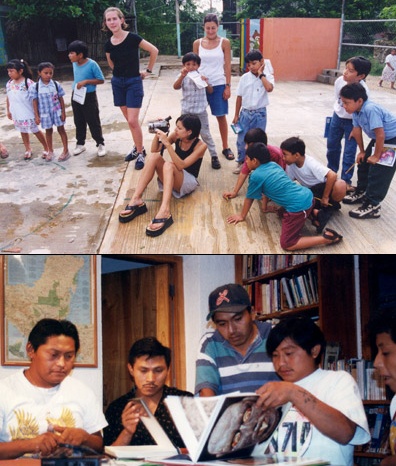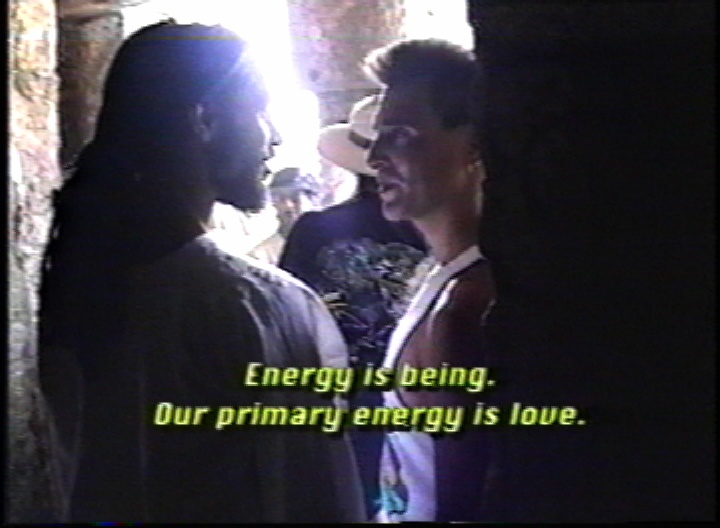|
OSEA is committed to supporting innovative research in ethnography
and anthropology. Our most recent project is the Heritage Ethnography Field School, which focuses training on the emergent field of ethnography of archaeology and the study of diverse forms of ecological, archaeological, intangible, cultural, and medical-health heritage. Ethnography of Archaeology is a new field of study that is constituted at the interdisciplinary intersections of: heritage studies, tourism studies, archaeology.
Independent Research
Projects
Students are expected to come to the program with research
interests. These can be general or quite specific. OSEA helps students
define and refine their own interests and design their own research.
OSEA believes strongly that success must derive from student motivation.
Our expert staff guides students to identify their interests and create
their own projects.
Students create independent research projects. However, participants
also have the option to conceive and create collaborative projects
with other students as a team. OSEA specializes in collaborative team
research. Forms of collaboration and team research have a wide range
of possibilties. Collaborative and team research involves everyone
doing a “piece” of a larger “research puzzle”
-- but, still there are many models of how this might happen. Sometimes
the pieces are like cogs where interdependent is at a high level;
or, sometimes the pieces are very autonomous. Participants are given
the option of how to design their independent research, whether as
an individual, team, or collaborative project. In all cases, the OSEA
staff is there to give close supervision and expert guidance.
Topics and Research
Issues
OSEA conducts its training programs in ethnography in the community
of Pisté for a reason: There are many, many research topics,
questions, issues, and problems that can be studied here. Participants
are encouraged to read about the
history of OSEA, especially
about prior research projects. Participants who are interested can
pursue further research along the lines of these projects, including:
Maya tourism art/artisanry, museum studies, handicraft production;
teaching English as a second language, the anthropology of education;
community history, life history, memory, and forms of narrative.
The list of possible research areas are nearly endless. Additional
potential topics of interest to participants include: Maya healing,
natural and alternative forms of medical treatment and belief; youth
cultures; Indigenous politics, the state-community interface; cultural
ecology, agricultural economy, social impacts of hurricanes and disasters;
tourism, development, heritage; the ethnography of archaeology; gender
dynamics and womens' roles, gay and lesbian cultures in rural settings;
religion, conversion, and the economic basis of religious activities,
ritual and belief; race/racial identity, ethnicity, ethnic interactions.
This is just a short list to help participants identify what interests
and motivates them.
Past Student Research Projects
The sky is not the limit -- only your interests and creativity!
Prior student projects include studies of:
• midwifery. Linsey 2009
• the experience of pregnant women. Gabi 2010
• family home-remedies. Marion 2010
• traditional Maya healers or hméen. Chantal 2010
• mother's role in family health and caretaking. Michelle 2010
• children's use and attitudes towards speaking Maya. Isabella 2005
• how Maya is used by adults and code switching. Brianna 2009
• taxi drivers’ talk about swine flu effects on tourism. Justin 2009
• Chichen vender and artisan social organization & community. Evan 2009
• tour guides, guide work and work histories, Nicole 2010
• interactions between tourists and artisans at Chichen Itza. Matt 2009
• restaurant & hotel worker's household economic strategies. Kristy 2011
• the use of newspapers by local politicians. Rickey 2010
• talk and experiences of Alcoholic Anonymous participants. Sarah 2009
• youth culture & use of public space. Albina 2011
• phenomenology and sociality of dance (jarana, salsa). Jennelle 2005
• coming-of-age Quinceaños parties. Alison 2005
• Study of Animal Husbandry, including the butchery of animals 1997
• Gender, specifically attitudes & views of marriage, sex, dating Gisela 1996
• Life History of a prominent Pisté woman Laura 1995
• Teaching English as a Second Language 1999
• Transcultural dynamics and processes in TESL classrooms Edith 1997, Saul 1998
• Anthropology of Education, the role of family in student success in school 2004
• Production and iconography of local Piste Maya art Fernando 1997, 1998, 1999
• History of INAH families that lived and worked at Chichén Itzá Lisa 1998, 1999
• Use of human rights in heritage property conflicts at Chichén Itzá Jennifer 2005
|




